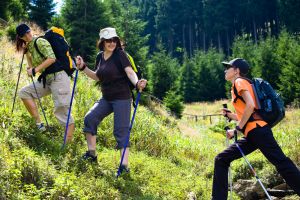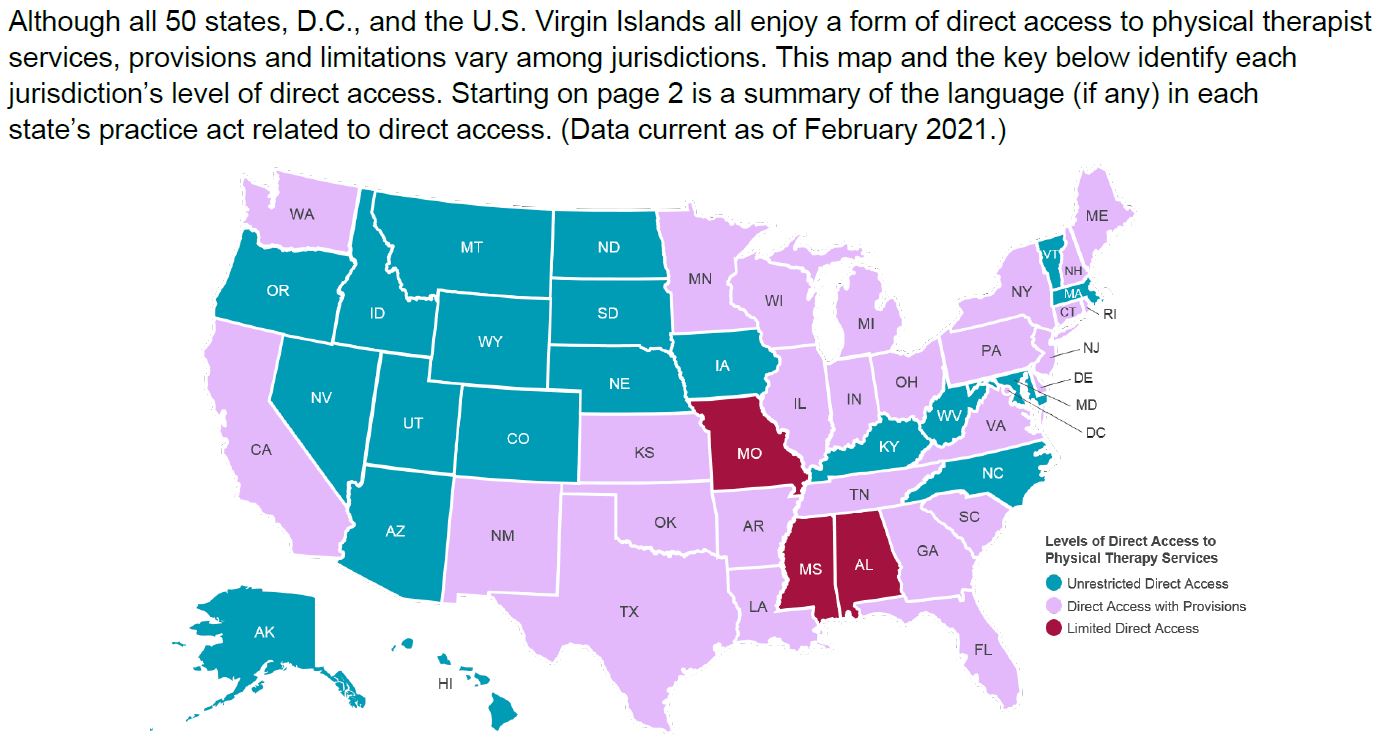
by Adrian Masoni, PT, DPT
With many active hikers in the area, a common question posed in physical therapy is the effectiveness and benefits of using hiking poles or trekking poles on the trail. These questions are posed by those who are experiencing lower extremity pain and wish to return to the trail as soon as possible as well as those who wish to protect against injury.
In the physical therapy setting, hiking poles serve as a great tool for increasing the functional capacity of the hiker and reducing time lost. Within the knee, increased force on the joint surfaces and tissues may result in exacerbation or acceleration of pre-existing bursa, cartilage, meniscus, or arthritic conditions. This contributes to the millions of people who seek medical attention every year for knee pain. Studies show forces in the knee can be lessened by 12-25% with the use of poles. These statistics hold true while hiking downhill and when carrying an external load such as a backpack.1,2
Lower extremity pain is commonly caused by excessive forces placed on the joints and muscles due to high demand, weakness, and/or fatigue. Hiking poles offer additional support, lower the stress placed on local structures, and decrease the chance of structural tissue damage. Studies show muscle injury, soreness, and recovery time are lower with the use of walking aides versus without.3, 4 Hiking poles may provide additional support during rehabilitation for a lower extremity injury by allowing earlier return to walking or hiking by decreasing total force and energy requirements placed on healing tissues.
Hiking poles not only decrease stress on the lower extremities but also help increase the overall energy expenditure by the hiker.5 By displacing force, which would normally be carried by the legs, to the upper body more muscle groups are being recruited. In this manner, more muscle mass is being utilized and more overall energy is being spent. This means more calories being burned when compared to the same hike without poles. Incredibly, these tests also show that despite the increased energy expenditure, ratings of perceived exertion (RPE) remained equal. Therefore, you can get more out of your favorite hike!
In addition to protecting the lower extremities, hiking poles provide many uses on the trail. They provide additional balance for uneven terrain, unstable footing, snowy or icy conditions, and during stream or river crossings with dangerous currents.
Hiking poles can be a very useful tool for the walker or hiker by decreasing excessive stress on the lower extremities, increasing the effectiveness of the exercise, increasing safety, and decreasing the incidence of injury.
Physical therapy is a great resource for impairments of the lower extremity. Trained in the art of movement, physical therapists can help identify sources of pain and dysfunction and help restore normal mechanics. They can also assist in the use of walking aides such as hiking poles and assist in your return to a healthy and active lifestyle.
About the Author: Adrian Masoni, PT, DPT, has been an avid hiker, backpacker, and outdoor enthusiast since he was able to walk! He has been a practicing physical therapist since 2008.
References:
- Schwameder H, Roithner R, Müller E, Niessen W, Raschner C. Knee joint forces during downhill walking with hiking poles. J Sports Sci. 1999 Dec;17(12):969-78.
- Bohne M, Abendroth-Smith J. Effects of hiking downhill using trekking poles while carrying external loads. Med Sci Sports Exerc. 2007 Jan;39(1):177-83
- Howatson G, Hough P, Pattison J, et al. Trekking poles reduce exercise-induced muscle injury during mountain walking. Med Sci Sports Exerc. 2011 Jan;43(1):140-5.
- Northumbria University (2010, June 3). How trekking-poles help hikers maintain muscle function while reducing soreness.
- Saunders MJ, Hipp GR, Wenos DL, Deaton ML. Trekking poles increase physiological responses to hiking without increased perceived exertion. J Strength Cond Res. 2008 Sep;22(5):1468-74.
ALSO SEE : SKI Season and Dreaded ACL injury



